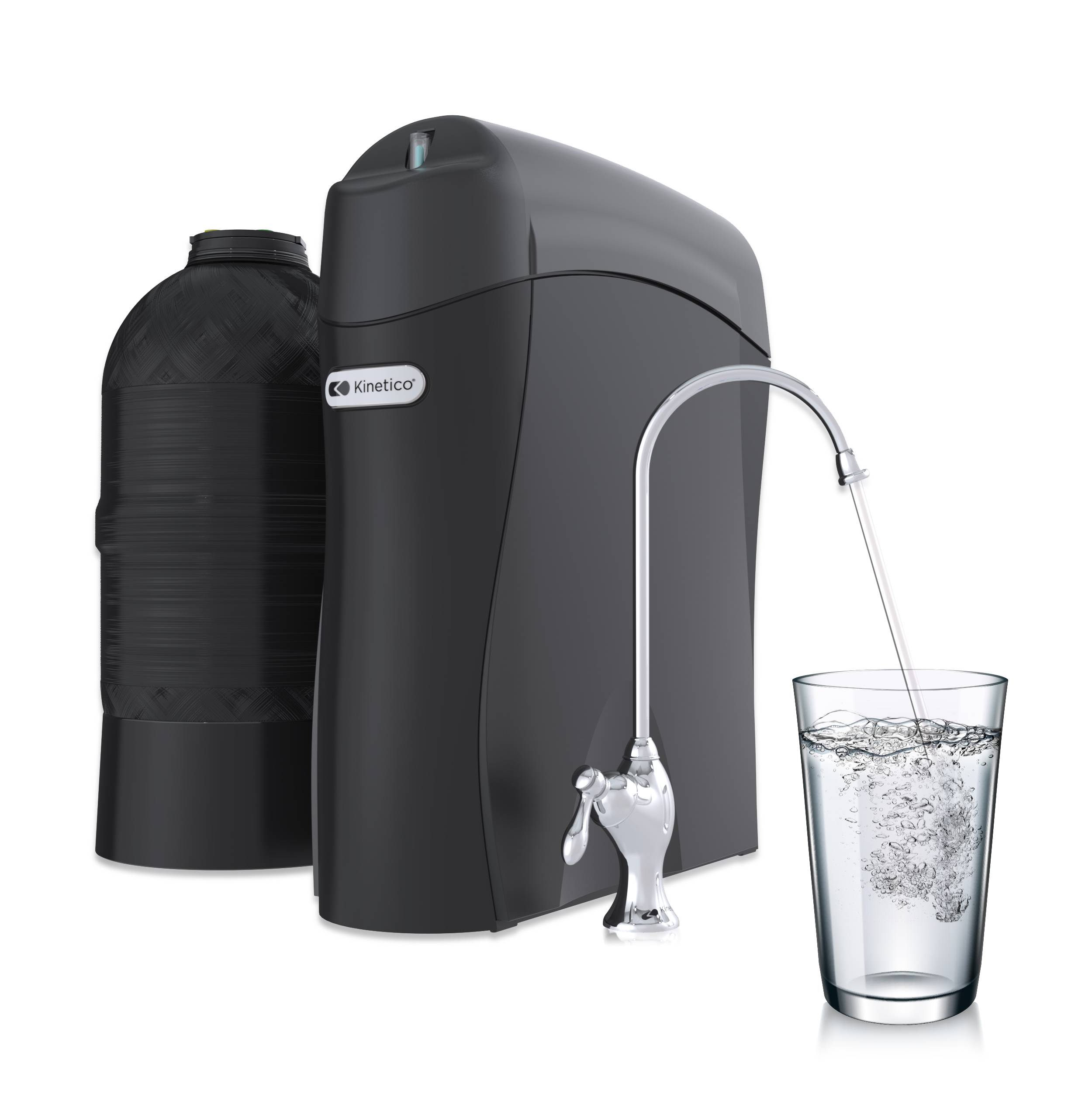Kinetico Dealers offer free in-home water tests. Many people call Kinetico Consumer Relations to ask why we require a representative in their home to test the water. Some are concerned that they will be subjected to a hard-sell salesman who won’t leave until the homeowner makes a purchase. Some view the water test as hocus-pocus water changing colors just for effect, with no real value.
The in-home appointment serves multiple purposes and is designed to establish a relationship between the homeowner and the water treatment provider. The water treatment expert tests the water for a variety of problem-causing materials, and discusses the homeowners’ water concerns and expectations. The benefits of treated water are reviewed using a variety of hands-on visuals. A plumbing and installation site analysis helps pull all the other information together to ensure the proper equipment is installed.
Our standard in-home water test includes testing for hardness, iron, pH and TDS (total dissolved solids). Depending on the area of the country, it may also include checking whether the iron is ferrous or ferric (dissolved or particulate), and testing for manganese, hydrogen sulfide (often called “sulfur”), tannins and chlorine. The best test results are achieved on site and in real time. In a drawn sample, the characteristics of iron, hydrogen sulfide, manganese and chlorine can change quickly. The in-home analysis provides immediate results, is free and might be more accurate for some things such as hydrogen sulfide and iron.
Ferrous iron (dissolved iron), also known as clear water iron, is invisible in the water but leaves stains on clothing, fixtures, toilets and bathtubs. A drawn glass of water with ferrous iron left sitting may develop reddish-brown sediment at the bottom of the glass. That sediment is ferric (particulate) iron. Ferrous iron becomes ferric or particulate iron once it’s been exposed to oxygen.
Ferrous iron and ferric iron require different methods of treatment. Ferrous iron can be removed from the water using a water softener. The level of ferrous iron and the amount of hardness (along with the plumbing audit) determines the size softener required for the home. Ferric iron requires filtration. This filtration might be a simple in-line sediment filter, but higher levels of ferric iron require a more aggressive type of treatment, such as a mechanical backwashing filter.
Manganese testing and treatment are similar to that of iron. Manganese in the water can result in gray or black stains. Again, this can be treated either with a softener or filtration system depending on whether the manganese is dissolved or particulate.
Hydrogen sulfide is usually present as a rotten-egg-smelling gas. The method used to treat hydrogen sulfide is dependent upon the rest of the water quality. For instance, if the hydrogen sulfide is a low-level gas, the Dealer might install an aeration tank that vents the gas. Or, if the hydrogen sulfide level is high with a lot of iron, an oxidizing agent might be introduced—usually chlorine which eliminates the hydrogen sulfide and oxidizes the iron to ferric iron, which is then filtered. Accurate tests are crucial to make certain your treated water is odor-free.
Chlorine is tested on-site for a couple of reasons. The pre-filter in the reverse osmosis drinking water system is selected based on the absence or presence of chlorine. The pre-filter assists performance and provides longevity to the workhorse of the RO—the membrane—by protecting the system from chlorine or sediment that is present in the incoming water.
Knowing the chlorine level also ensures the proper water softener or dechlorination system is installed. Chlorine can shorten the life of your softener if it is not dealt with properly.
Treating the water is truly a scientific process—no hocus-pocus. There is a proper detailed method of diagnosis and many proven methods of treatment. Third-party, unbiased organizations such as the Water Quality Association and the American Water Works Association are great sources of information about water testing and treatment. You can read more at www.wqa.org or www.awwa.org. Or of course, you can always call your local water treatment expert and let them guide you through the processes.
Also read about “Pink Slime“


